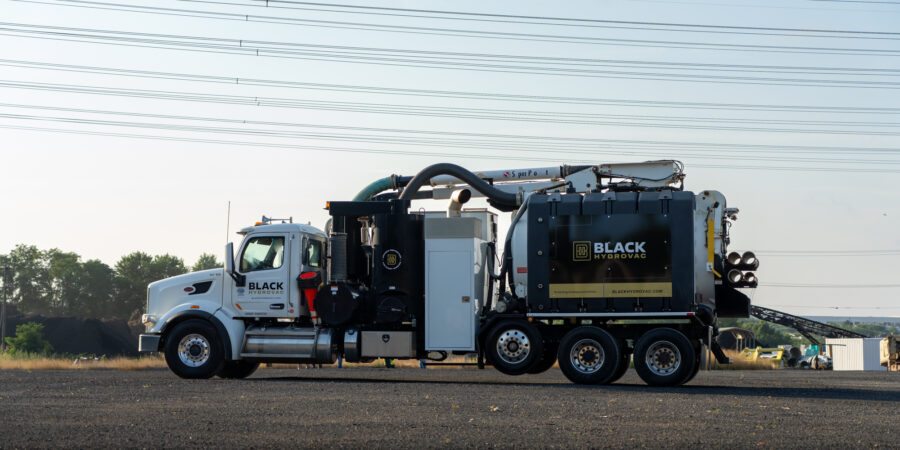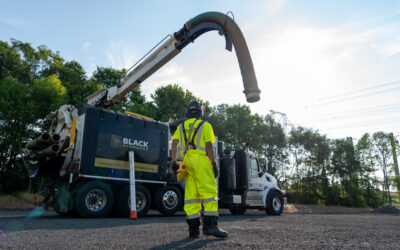Utility Strikes Are Common But Preventable: Is Vacuum Excavation the Remedy?
In the United States, 1-2 utility strikes happen every minute. A utility strike occurs when an underground utility — such as gas, water, or electrical lines — is damaged during excavation work, incurring physical, financial, and reputational damage. A utility strike isn’t just expensive — it can be dangerous. But the good news? Most strikes are avoidable with the right approach.
What is the True Cost of a Utility Strike?
The negative consequences of utility strikes cannot be overestimated. They result in serious physical, financial, and reputational damages that many businesses cannot afford. Strikes can lead to everything from service outages to explosions, resulting in expensive and potentially fatal outcomes.
Financial & Physical Loss
According to Geoff Zeiss and Dr. Sakura Shinoaki, authors of “Reducing Damage to Underground Utility Infrastructure During Excavation,” the U.S. experiences between 400,000 and 800,000 utility strikes annually. Each utility strike costs an average of $4,000, but that’s just the beginning. The bigger hit comes from delays, repairs, and safety risks. The authors note that since 2000, more than 400 people have lost their lives due to utility strikes, and more than 2,000 others have been injured.
- Annual Utility Strikes: Between 400,000 and 800,000 utility strikes each year.
- Average Cost per Incident: $4,000 in damages per strike event.
- Fatalities and Injuries: 400+ deaths and over 2,000 injuries since 2000.
Reputational Damage
The financial and physical tolls are not the only concerns. Beyond the financial and safety hit, utility strikes can damage a company’s reputation — sometimes even more than the cost of repairs. The 2019 Dirt Report published by Common Ground Alliance found that indirect and social costs — such as customer dissatisfaction, brand damage, and legal consequences — are exponentially greater than direct repair costs.
- Indirect and Social Costs: A detailed analysis of 16 case studies revealed that the ratio of indirect and social costs to the direct cost of repair was 29:1.
- The Bigger Picture: Avoiding utility strikes not only saves money but also protects your company’s public image and trust with stakeholders.
The good news? 76% of utility strikes are avoidable when the proper precautions are taken, and when companies choose safer excavation methods.
The Dirt on Highest Reported Damages
The record shows that certain types of work and roles are consistently associated with utility strikes. Historically, contractors have been responsible for a large percentage of incidents, and they also bear the burden of the consequences. This presents a prime opportunity for contractors to rewrite their reputation by adopting safer excavation methods.
High-Risk Work
According to the 2021 Dirt Report, certain types of work are more prone to utility strikes than others. The highest number of reported damages occurred in telecommunications/cable work, followed by water lines, landscaping/fencing, natural gas lines, and sewer work.

*Source: 2021 DIRT Report
At-Fault Roles
In 2021, contractors and developers were found responsible for over 75% of utility strike damages, followed by utility companies, municipalities, and landowners.
In 2023, contractors were at fault for 83% of natural gas-related damages and 92% of telecom-related damages. These figures highlight the significant role contractors play in preventing utility strikes and the need for greater responsibility when selecting excavation methods.

*Source: 2021 DIRT Report
Fortunately, staying out of these statistics is within your control. With the right methods and a trusted excavation partner, you can dramatically reduce the risk of utility strikes and safeguard both your project and reputation.
Lower Risk With Safer Excavation Methods
The method used for excavation plays a critical role in determining the level of risk involved. Traditional excavation methods, such as backhoes and trenchers, may be proficient under ideal conditions but carry great risk when dealing with sensitive underground utilities. These methods often lack precision, making it more likely that a utility will be damaged. Vacuum excavation, however, offers a safer, more controlled alternative.
The Remedy: Vacuum Excavation
The 2021 Dirt Report found backhoes as the leading equipment type responsible for damage (nearly 50%), followed by hand tools, horizontal directional drills, trenchers, and dozers.
Here’s why contractors are turning to vacuum excavation as a safer option:
- More Forgiving: Pressurized water or air, which is used in vacuum excavation, is much more forgiving than the forceful impact of backhoes or hand tools.
- Higher Precision: Hydrovac (vacuum excavation) offers greater precision, making it ideal for working around sensitive underground utilities.
- Reduced Risk: Unlike hand-digging, vacuum excavation removes dirt without putting workers in a confined space in close proximity to sensitive utilities.
- Temperature-Safe: Hydrovac can utilize cold water, reducing the risk of damaging heat-sensitive materials like plastic pipes, fiber optic cables, and coatings on pipelines.
Now that the risks and remedies are clear, let’s take a look at how your excavation partner can make or break your safety record.
Safe Methods Still Need Safe Operators
Vacuum excavation reduces risk, but safety comes down to the people behind the equipment. At Black Hydrovac, we don’t just follow safety standards — we set them. Our team ensures every job meets the highest safety and precision requirements.
A Critical Ally
Black Hydrovac has prevented over 17,000 utility strikes through high-powered, low-impact solutions — specializing in high-stakes projects like data center construction where maximum protection is required.
Black Hydrovac is the preferred partner among:
- Local, State, & Federal Government
- Healthcare & Critical Industries
- Technology & Data Centers
- Energy & Utility Providers
- Commercial & Residential Construction
Ready to expose utilities with confidence, not concerns? Reach out to Black Hydrovac today and ensure that your next excavation project is done safely and accurately, avoiding costly utility strikes along the way.
References
Common Ground Alliance, 2023 Dirt Report. Spotlight on 2023 Data. https://dirt.commongroundalliance.com/2023-DIRT-Report/Spotlight-on-2023-Data#mainContentAnchor
Common Ground Alliance, 2021 Dirt Report. Report Charts & Infographics. https://dirt.commongroundalliance.com/2021-DIRT-Report/2021-DIRT-Report-Charts-Infographics#mainContentAnchor
Common Ground Alliance, 2019 Dirt Report. https://commongroundalliance.com/Publications-Media/DIRT-Report/2019-DIRT-Report
Geospatial Information & Technology Association. https://gita.memberclicks.net/index.php?option=com_content&view=article&id=262:gita-white-paper–reducing-damage-to-underground-utility-infrastructure-during-excavation&catid=20:site-content
Geospatial World. https://geospatialworld.net/blogs/reducing-damage-to-underground-utility-infrastructure-during-excavation/




